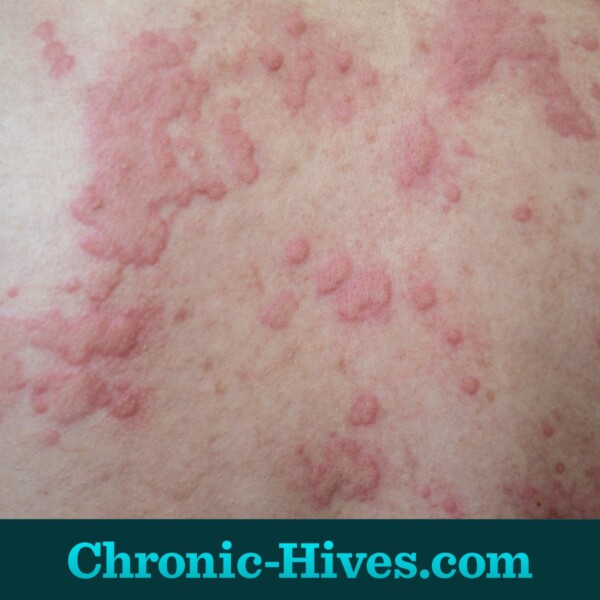What Are Symptoms Of Chronic Hives?
Reviewed by: HU Medical Review Board | Last updated: November 2025
Symptoms of chronic hives are usually limited to the skin. The 2 most common symptoms of chronic hives are:1-4
- Urticaria (also called hives, welts, or wheels)
- Angioedema (painful swelling under the skin)
People with chronic hives have either or both of these symptoms for 6 weeks or longer. However, symptoms that affect other parts of the body (systemic symptoms) can also happen. Symptoms are usually unpredictable. In other cases, certain triggers may cause symptoms to flare.1-4
Talk to your doctor if you have hives that continue to appear for several days. Symptoms are rarely life-threatening. However, get emergency care if you have signs of a serious allergic reaction or anaphylaxis. Anaphylaxis is a severe, life-threatening allergic reaction.
What are the most common symptoms of chronic hives?

Urticaria
Urticarial lesions are also called hives, wheals, or welts. They have a few typical features:1
- A region of swelling surrounded by patches of redness
- An itching sensation
- Individual lesions lasting less than 24 hours
- No permanent skin color changes
Individual hives may be round, ring-shaped, or wavy. Any area of the body can be affected, but areas where clothing compresses the skin have the highest risk. Individual hives appear, merge, and fade within 24 hours. This can make it hard to describe them at doctor’s appointments. Keeping a diary of your symptoms and taking photos of your hives can help you describe them and show examples to your doctor.2,3
About 50 percent of people with chronic hives have urticaria as their main symptom. Another 40 percent have a mixture of urticaria and angioedema.2
Angioedema
Angioedema is swelling beneath the skin. It is different from other types of swelling because it:2,4
- Develops over minutes to hours and resolves gradually over 1 to 3 days
- Usually affects lips, face, hands, feet, and genitals
- Affects the left and right sides of the body differently
- Feels painful or numb, not itchy
Angioedema of the throat or tongue can block the airways. This happens mostly during anaphylaxis and can be a life-threatening situation.5
About 10 percent of people with chronic hives have angioedema as their only symptom. Doctors use a different process to diagnose these people because of other possible causes of angioedema.2

Non-skin symptoms
Some people with chronic hives have systemic symptoms. This refers to symptoms that involve parts of the body other than the skin. Some possible systemic symptoms include:2,6
- Headache
- Fatigue
- Joint pain or swelling
- Gastrointestinal (GI) symptoms
- Wheezing
People with these symptoms tend to have more severe and long-lasting chronic hives. Additional symptoms, like fever and joint inflammation, may be a sign that you have a different condition.2
How often do symptoms of chronic hives happen?
For many people, living with chronic hives feels like a roller coaster. Symptoms may happen frequently and unpredictably. This cycle of hives appearing and fading can last for months or years.3
The unknown nature of when flares can happen often leads to anxiety. The itchiness can be severe enough to disrupt work, school, and sleep. These factors can combine to worsen quality of life.3
What triggers can lead to symptom flares?
In nearly all cases of chronic hives, there is no known cause. However, there may still be certain factors that worsen symptoms. These triggers can include:2
- Physical factors, such as heat and tight clothing
- Anti-inflammatory drugs
- Stress
- Exercise
- Alcohol
- Certain diet changes
If you think a physical trigger is worsening your symptoms, talk to your doctor. They can perform certain tests and suggest ways to avoid exposure to your triggers.